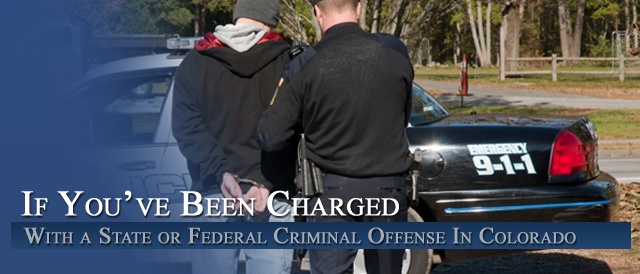




Crimes of Violence
Aggravated Assault
The crime of physically attacking another person that results in serious bodily harm and/or is made with a deadly or dangerous weapon such as a gun, knife, sword, ax or blunt instrument. Aggravated assault is usually a felony punishable by a term in state prison.
Assault
The threat or attempt to strike another, whether successful or not, provided the target is aware of the danger. The assaulter must be reasonably capable of carrying through the attack. In some states if the assault is with a deadly weapon (such as sniping with a rifle), the intended victim does not need to know of the peril. Other state laws distinguish between different degrees (first or second) of assault depending on whether there is actual hitting, injury or just a threat. “Aggravated assault” is an attack connected with the commission of another crime, such as beating a clerk during a robbery or a particularly vicious attack. 2) n. the act of committing an assault, as in “there was an assault down on Third Avenue.” Assault is both a criminal wrong, for which one may be charged and tried, and a civil wrong for which the target may sue for damages due to the assault, including for mental distress.
Assault and Battery
The combination of the two crimes of threat (assault) and actual beating (battery). They are both also intentional civil wrongs for which the party attacked may file a suit for damages.
Battery
The actual intentional striking of someone, with intent to harm, or in a “rude and insolent manner” even if the injury is slight. Negligent or careless unintentional contact is not battery no matter how great the harm. Battery is a crime and also the basis for a lawsuit as a civil wrong if there is damage. It is often coupled with “assault” (which does not require actual touching) in “assault and battery.”
Domestic Violence
The continuing crime and problem of the physical beating of a wife, girlfriend or children, usually by the woman’s male partner (although it can also be female violence against a male). It is now recognized as an antisocial mental illness. Sometimes a woman’s dependence, low self-esteem and fear of leaving cause her to endure this conduct or fail to protect a child. Prosecutors and police often face the problem that a battered woman will not press charges or testify due to fear, intimidation and misplaced “love.” Increasingly, domestic violence is attracting the sympathetic attention of law enforcement, the courts and community services, including shelters and protection for those in danger.
Felony Murder Doctrine
A rule of criminal statutes that any death that occurs during the commission of a felony is first-degree murder, and all participants in that felony or attempted felony can be charged with and found guilty of murder. A typical example is a robbery involving more than one criminal, in which one of them shoots, beats to death or runs over a store clerk, killing the clerk. Even if the death were accidental, all of the participants can be found guilty of felony murder, including those who did no harm, had no gun, and/or did not intend to hurt anyone. In a bizarre situation, if one of the hold-up men or women is killed, his/her fellow robbers can be charged with murder.
First-Degree Murder
Although it varies from state to state, it is generally a killing that is deliberate and premeditated (planned, after lying in wait, by poison or as part of a scheme); in conjunction with felonies such as rape, burglary, arson, or involving multiple deaths; the killing of certain types of people (such as a child, a police officer, a prison guard, a fellow prisoner); or certain weapons, particularly a gun. The specific criteria for first-degree murder are established by statute in each state and by the U.S. code in federal prosecutions. It is distinguished from second-degree murder in which premeditation is usually absent, and from manslaughter, which lacks premeditation and suggests that at most there was intent to harm rather than to kill.
Murder
The killing of a human being by a sane person, with intent, malice aforethought (prior intention to kill the particular victim or anyone who gets in the way) and with no legal excuse or authority. In those clear circumstances, this is first-degree murder. By statute, many states consider a killing in which there is torture, movement of the person before the killing (kidnapping), the death of a police officer or prison guard, or it was as an incident to another crime (as during a hold-up or rape), to be first-degree murder, with or without premeditation and with malice presumed. Second-degree murder is such a killing without premeditation, as in the heat of passion or in a sudden quarrel or fight. Malice in second-degree murder may be implied from a death due to the reckless lack of concern for the life of others (such as firing a gun into a crowd or bashing someone with any deadly weapon).
Depending on the circumstances and state laws, murder in the first- or second-degree may be chargeable to a person who did not actually kill, but was involved in a crime with a partner who actually did the killing or someone died as the result of the crime. Example: In a liquor store stick-up in which the clerk shoots back at the hold-up man and kills a bystander, the armed robber can be convicted of at least second-degree murder. A charge of murder requires that the victim must die within a year of the attack.
Death of an unborn child who is “quick” (fetus is moving) can be murder, provided there was premeditation, malice, and no legal authority. Thus, abortion is not murder under the law. Example: Jack Violent shoots his pregnant girlfriend, killing the fetus. Manslaughter, both voluntary and involuntary, lacks the element of malice aforethought.
Second-Degree Murder
A non-premeditated killing, resulting from an assault in which death of the victim was a distinct possibility. Second-degree murder is different from first-degree murder, which is a premeditated, intentional killing, or results from a vicious crime such as arson, rape or armed robbery. Exact distinctions on degree vary by state.
Manslaughter
The unlawful killing of another person without premeditation or so-called “malice aforethought” (an evil intent prior to the killing). It is distinguished from murder (which brings greater penalties) by lack of any prior intention to kill anyone or create a deadly situation. There are two levels of manslaughter: voluntary and involuntary. Voluntary manslaughter includes killing in heat of passion or while committing a felony. Involuntary manslaughter occurs when a death is caused by a violation of a non-felony, such as reckless driving (called “vehicular manslaughter”).
Examples: Eddy Hothead gets into a drunken argument in a saloon with his acquaintance Bob Bonehead, and Hothead hits Bonehead over the head with a beer bottle, causing internal bleeding and death. Brent Burgle sneaks into a warehouse intent on theft and is surprised by a security man, whom Burgle knocks down a flight of stairs, killing him. Both are voluntary manslaughter. However, if either man had used a gun, a murder charge is most likely since he brought a deadly weapon to use in the crime.
The immediate rage in finding a loved one in bed with another followed by a killing before the passion cools usually limits the charge to voluntary manslaughter and not murder, but prior attacks could convince a district attorney and a jury that the killing was not totally spontaneous. Lenny Leadfoot drives 70 miles per hour on a twisting mountain road, goes off a cliff and his passenger is killed in the crash. Leadfoot can be charged with involuntary manslaughter.
Homicide
The killing of a human being due to the act or omission of another. Included among homicides are murder and manslaughter, but not all homicides are a crime, particularly when there is a lack of criminal intent. Non-criminal homicides include killing in self-defense, a misadventure like a hunting accident or automobile wreck without a violation of law like reckless driving, or legal (government) execution. Suicide is a homicide, but in most cases there is no one to prosecute if the suicide is successful. Assisting or attempting suicide can be a crime.
Justifiable Homicide
A killing without evil or criminal intent, for which there can be no blame, such as self-defense to protect oneself or to protect another or the shooting by a law enforcement officer in fulfilling his/her duties. This is not to be confused with crimes of passion or claims of diminished capacity, which refer to defenses aimed at reducing the penalty or degree of crime.
Self-Defense
The use of reasonable force to protect oneself or members of the family from bodily harm from the attack of an aggressor, if the defender has reason to believe he/she/they is/are in danger. Self-defense is a common defense by a person accused of assault, battery or homicide.
The force used in self-defense may be sufficient for protection from apparent harm (not just an empty verbal threat) or to halt any danger from attack, but cannot be an excuse to continue the attack or use excessive force.
Examples: an unarmed man punches Allen Alibi, who hits the attacker with a baseball bat. That is legitimate self-defense, but Alibi cannot chase after the attacker and shoot him or beat him senseless. If the attacker has a gun or a butcher knife and is verbally threatening, Alibi is probably warranted in shooting him. Basically, appropriate self-defense is judged on all the circumstances. Reasonable force can also be used to protect property from theft or destruction. Self-defense cannot include killing or great bodily harm to defend property, unless personal danger is also involved, as is the case in most burglaries, muggings or vandalism.
More Information:












